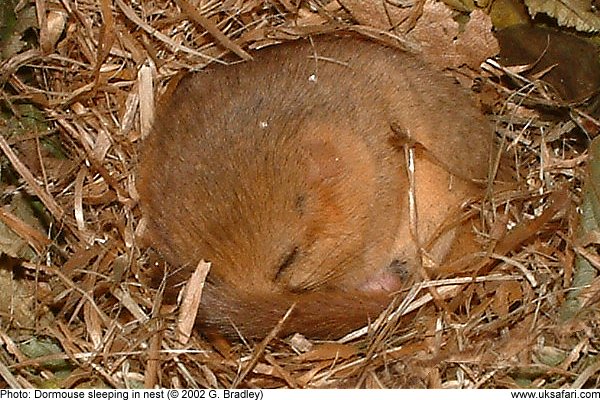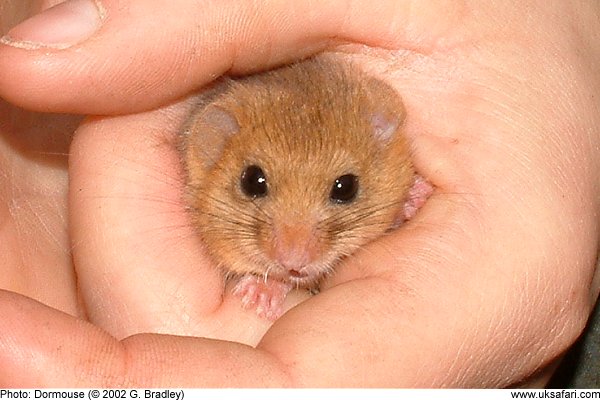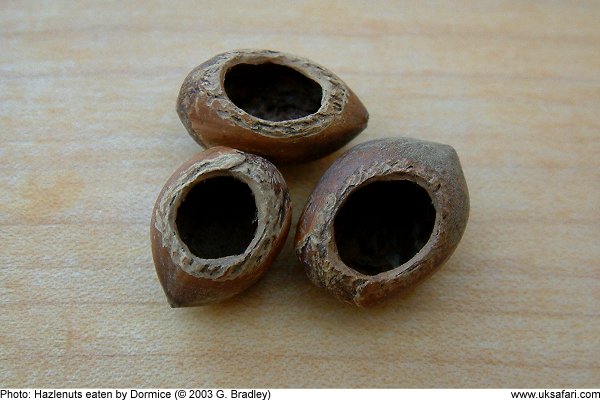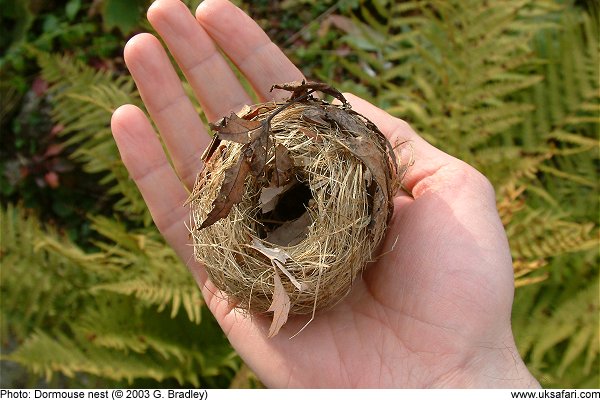 Dormice
Dormice
News > Dormice >

At this time of year Hazel Dormice are getting ready for their winter hibernation. From October through to April they sleep in a little nest under leaf litter on the woodland floor, so it's important they're fully prepared.
Right now the hedgerows are full of food, and the dormice are busy fattening up on all the blackberries, hazelnuts and insects they can find before the cold weather sets in.
In the next few weeks they can literally double in weight. While they're hibernating they'll live off the fat reserves in their body, so being overweight is a positive advantage.
You have to be incredibly lucky to spot one of these little critters. They're nocturnal and extremely shy, which is hardly surprising because they have so many predators such as foxes, stoats and weasels. Studies suggest that they've disappeared from over half of their historic range, due in part to the loss of ancient woodlands and hedgerows.

In Victorian times children used to keep dormice as pets, and when you see a dormouse, you understand why. With their bulging black eyes and thick furry tails they're one of the cutest looking mammals in the UK.
Nowadays, because of their scarcity, dormice are protected by law, so if you want to get close to a dormouse it's best to go on an organised walk with someone who is licensed to handle dormice.


The easiest way to discover if you have dormice in your area is to look for food remains. Shells of hazelnuts which have been eaten by dormice have a round, smooth edged hole. You might also find an old hibernation nest. They look like a brown tennis ball, woven together from bits of honeysuckle bark, grass and dry leaves.
More info at: UK Safari Dormice Fact File

 Popular Pages
Popular Pages
Amphibians, Bats, Badgers, Beetles, Birds, Birds of Prey, Bumble Bees, Butterflies, Caterpillars, Creepy-Crawlies, Deadly Spiders, Dolphins, Dragonflies, E-Postcards, False Widow Spiders, Free Newsletter, Frogs, Fungi, Garden Spiders, Glow-Worms, Grey Squirrels, Hedgehogs, House Spiders, Ladybirds, Mammals, Marine Mammals, Moths, Owls, Reptiles, Spiders, Toads, Trees, Wildlife Hospitals
© Copyright 2017 G. Bradley - UK Safari | About Us | Links | Contributors



 Related Pages
Related Pages
